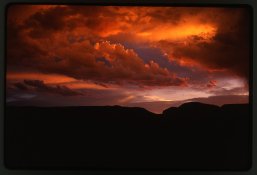batwister
Member
I've just spent a sum of cash on some camping gear with the intention of spending extended periods in wild places from dawn 'til dusk. I feel this is something that will increase my productivity. Without a car, getting to some of the more interesting places in my area requires day long hikes. Exhausting and a waste of light.
Had this in mind since the beginning of the year and to be honest, with winter coming around, I'll probably not get much done before another investment in better clothing and probably another tent!
I'm looking forward to it, but this being my first time wild camping, I'm a little apprehensive. I'm not sure if there are any famous photographers notable for doing this? Something tells me Galen Rowell might have, but I don't know much about his work.
Landscape photography is by nature a lonely business, and this is taking it to the extreme. Part of me feels this kind of isolation in remote places can be detrimental to creative work? Edward Weston did say anything a mile from the road isn't photogenic. Maybe it has to do with the peace of mind needed to produce images, without worrying about finding a camp, food, how cold it might be during the night. But I'm still wondering why more landscape photographers don't do it. Suppose I'll find out!
But has anybody done this? And apart from the back strain induced by the added weight of your backpack, how did you fair up? Is it advantageous for a landscape photographer or a bit of an extremity?
Had this in mind since the beginning of the year and to be honest, with winter coming around, I'll probably not get much done before another investment in better clothing and probably another tent!
I'm looking forward to it, but this being my first time wild camping, I'm a little apprehensive. I'm not sure if there are any famous photographers notable for doing this? Something tells me Galen Rowell might have, but I don't know much about his work.
Landscape photography is by nature a lonely business, and this is taking it to the extreme. Part of me feels this kind of isolation in remote places can be detrimental to creative work? Edward Weston did say anything a mile from the road isn't photogenic. Maybe it has to do with the peace of mind needed to produce images, without worrying about finding a camp, food, how cold it might be during the night. But I'm still wondering why more landscape photographers don't do it. Suppose I'll find out!
But has anybody done this? And apart from the back strain induced by the added weight of your backpack, how did you fair up? Is it advantageous for a landscape photographer or a bit of an extremity?






